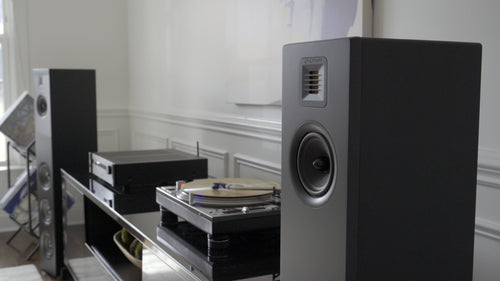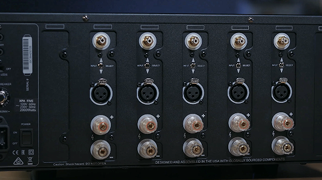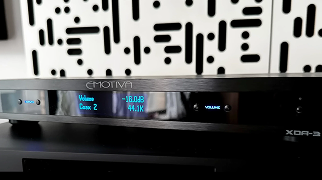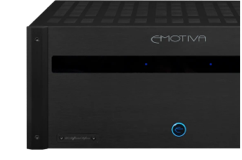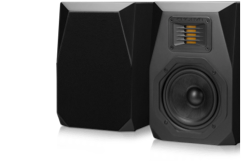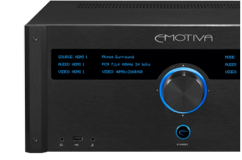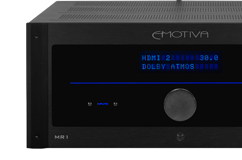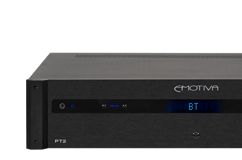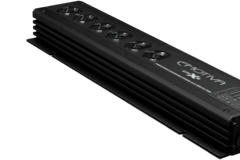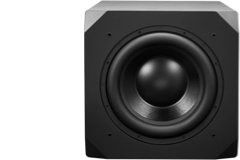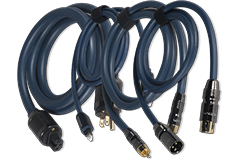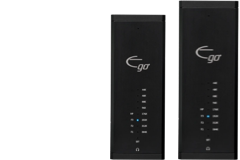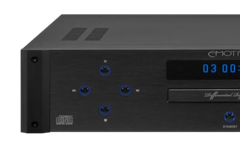
When the Emotiva Audio story left off, we reached the point where, early in his career, Dan Laufman was making waves (the good kind) at his first ODM company LA Design, designing and building audio gear for his first “real” client, Infinity Systems, one of the most successful and overall relevant brands in the history of audio. Other significant clients included Concord Electronics and Pyle Industries. This work led to the sale of LA Design to Harman International. While this may paint a picture of his professional start in the business, it doesn’t yet say much about the path that led to Emotiva, which as you may know was the first direct-to-consumer brand in high-end audio.
In the years following his time with LA Design, Dan’s career encompassed leading positions with some of the biggest brands in audio, including Harman International, Lanzar Audio Corp., and Recoton’s Premium Audio Group and included brand work for AR, NHT, Jensen, and others. This period also led to exciting and challenging work with Ford, Chrysler, and BMW.
“I was lucky in that I was able to harness my love of audio design and use it in service of some of my favorite brands,” said Dan. “Each time, I tried to strike a balance between staying true to the projects time and budget constraints, while trying to push the limits of what could typically be achieved at a given price point.”
In 1998, Dan took the first significant step toward starting his own brand by establishing Jade Design, an OEM/ODM design and engineering company catering to some of the biggest names in audio. Dan and his team covered it all, from amps to preamps, DACs, sources, digital audio processors, loudspeakers, and more. Jade Design served the consumer, professional, and commercial audio markets. “After so many years of contributing to other companies, it was a blast to really stretch my legs,” said Dan. “And it was a great education in the operations side of manufacturing.”

As great of an education, as it may have been, Jade Design was and remained a company that designs and manufactures products for other brands. Ultimately, Dan has significant input, but the final say is with the client. Jade Design grew rapidly in just a few years, and in addition to designing and developing products for more than 40 companies, Jade invested its largest supplier in China. Together with his Taiwanese partner, they rebranded the company and named it Integrity Electronics, Co. Ltd. and grew this business to a very respectable size. When Dan ultimately sold his shares of the company, they employed over 1,000 people working in a five-acre manufacturing facility designed from the ground up by Dan and his partner.
After several years of living in airplanes and hotel rooms, Dan felt the need to step back and think about the next chapter of life. The creation of Emotiva and the products that came along with it was a passion project, and initially a cathartic endeavor. Emotiva sparked Dan’s creativity, and the products he designed were just for him - the way that he wanted them, without having to adhere to the instructions and input of others, which was missing from his OEM projects. It was reminiscent of the feeling he had when he was starting out designing and building audio gear in his garage. The name, Emotiva, means “emotional” in Italian, and it very much represents the place Dan was in his life at the time. He found joy in what he was creating again. The start of Emotiva also marked a significant move both for the company and Dan and his family. Uprooting from their native roots in Southern California, Dan and his family moved to Nashville, TN. The move was critical to Emotiva’s success, and the timing represented the yearning for innovation and inspiration, and for an audio company, Music City was a perfect fit.

Emotiva may not have ever seen the light of day had it not been for a touch of luck and being in the right place at the time, and of course, killer products. Dan still valued relationships with his OEM customers, and he didn’t want to upset anyone by suddenly showing up in the market with a competitive brand, and decided it was better to not go head-to-head with his customers in the retail space. However, in the early 2000s, selling directly through the internet was still in its infancy, and was especially new territory for audio components. “When I broached the idea of selling my low cost ‘hobby’ brand direct to customers, my clients rolled their eyes and said, ‘Sure. Knock yourself out.’

To old-guard marketers, the internet was a new frontier that offered nothing more than an opportunity to promote your brand.” As others in the business saw it, no audiophile or casual listener would buy a product without first having a chance to sample it. After all, audio gear isn’t known for being cheap or light, and the prospect of trying and returning electronics appeared on the surface to be a lose-lose situation. However, Dan had a different point of view. “Our CFO, who is also my wife, Cathy, and I sat down and talked about what it would take to get music and movie lovers to buy products online. The idea seemed like a long shot, to say the least.” Added Dan: “Clearly, there had to be a safety net in the initial purchase phase. Thirty days seemed like a fair amount of time to decide whether a product is to your liking. And there was a real advantage to hearing it in your own home, versus a showroom. Also, the price had to reflect significant savings over comparable, competitive models. “ With these two factors in place, we set out to introduce a brand that would, at least at the beginning, live online.”

We all know how it worked out, but not everyone is familiar with the timeline of the earliest Emotiva products. That and more in part 3!
Share Post


